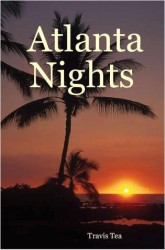
I've always been interested in fusing genres - and hopefully getting the both of best worlds in the process. On my blog, the genres are usually fantasy and science fiction, combined like the scientist in
The Fly. But when I read that Maria Zannini had released a science fiction romance, I had to find out more.
Mostly because I enjoy both those genres, but couldn't recall reading more than one or two novels which spanned them both. Today Maria discusses some of the pleasures and pitfalls of this sub-genre, and does it with her trademark humor, attention to detail and solid background. Please give her a warm welcome - and be sure to check out
True Believers. You'll see why after the interview.
1. Science fiction romance doesn't seem to be as popular as fantasy/paranormal romance. What are your thoughts on why this might be?Maria : The ‘science’ part of fiction probably conjures dry, dusty data of things we’d rather forget from our high school physics lab. I’m not an egghead at all so I can commiserate with people who are afraid of a story coming off as stuffy and filled with technical jargon.
I liken SFR novels to movies like
Star Trek or
Avatar. You can tell a good story and still have a lot of exciting techy stuff happening in the background. We need more smart science fiction that can pull you into a techy world without boring you to tears. I remember watching the original Star Trek as a child. It was a fantastical world that was out of our reach. It was exciting and fascinating. We need to focus more on the awe and bring people back to the future. (Pardon the pun.)
2. What ways could authors use science fiction (setting/technology/aliens) to enhance romance? Sadly, the only thing that came to mind right away for me was sex in zero-gravity.Maria : Is there anything sexier than a really smart hero or heroine who can get out of jams with nothing more than his wits? And let’s not forget the anatomically enhanced aliens who can rock your world just by getting naked. More than a few reviewers have mentioned True Believers’ hero, Taelen Jessit’s…ahem…extra man parts. …I can’t imagine why that tickled people so. :grin:
My favorite way to enhance romance is immersing the reader in a culture truly alien from our own. What might be normal for them would be totally foreign to us, and that can prove deliciously naughty and nice.
3. What clichés would you suggest writers be aware of when writing SF romance? Maria :• If you write aliens, make them physiologically believable. Pointy ears, wings, and gills ought to have a physical purpose for existing rather than serve as window dressing.
• Never forget that SFR is about relationships first.
• Every story doesn’t have to be epic. Sometimes it’s enough that the hero and heroine save the dog instead of the world.
4. What kind of scientific research did you need to do for your novel True Believers?Maria : I am a conspiracy theory junkie so I used existing conspiracy theories to build the science necessary for True Believers. For example, HAARP (High Frequency Active Auroral Research Program ) is an existing technology that uses high powered radio transmissions. This was the basis of the com-web in the story.
The AIs (artificial intelligences) were born from conversations I had with a computer scientist who once worked for NASA. I was shocked at what computers were capable of doing, so it wasn’t much of a leap to give my AIs personality and free will.
The research was more fun than I expected. It was also a bit scary. Society has progressed at an alarming rate this past half century. It makes you wonder where we’ll be in the next fifty years. I am hoping life will imitate art, and if that’s the case, we have our work cut out for us.
Thanks for your detailed and intriguing (extra man parts?) answers, Maria, and all the best with True Believers!Bio: Maria Zannini used to save the world from bad advertising, but now she spend her time wrangling chickens and fighting for a piece of the bed against dogs of epic proportions. Occasionally, she writes novels.
Buy True Believers before April 30 and get an additional 15% discount. Just use coupon code BESTOFCARINA at Checkout. Offer is valid until April 30, 2011, 11:59 p.m. EDT.
My blogFacebookTwitter













